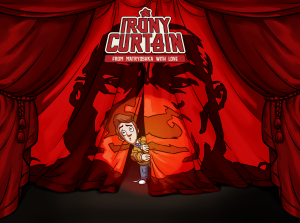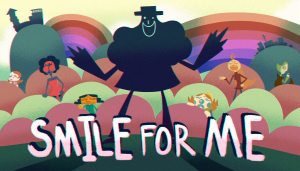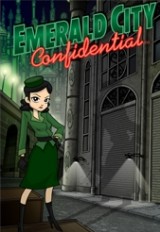Review for Sea of Solitude

Monsters may not be real in the literal sense, but they certainly are in the figurative sense. More and more in popular entertainment, monsters have been used as metaphorical manifestations of real-world trauma like child abuse, grief, anger, pain, addiction and other… well, monstrous afflictions. The latest to represent hideous, deformed creatures as visual representations of inner turmoil is Sea of Solitude, an EA Original by Jo-Mei Games that does a wonderful job of establishing a haunting, heartfelt atmosphere within a gorgeous 3D environment. It’s not nearly as successful at providing enough substantial gameplay to support it, and certain narrative elements veer between blindingly obvious and disappointingly vague, but as an overall experience it is worth motoring through the weaker elements of this artfully evocative tale of loss and letting go.
Like many other works that came before it, Sea of Solitude stars a young naïf – small, frail and alone, unable to defeat the giant creatures that stalk her by might alone. But there are two major differences from the norm: here “defeat” is (usually) not the goal, and the heroine isn’t just confronting monsters, she IS a monster herself. Granted, Kay is the most petite, sweet-natured monster I can recall, but she appears to be tainted by a curse of some sort that makes her look a bit like a pitch-black faun – minus the horns but with a bright orange backpack and glowing red eyes.
Figuring out what it is that plagues this young woman-thing and how she can be restored to her real self is for players and protagonist to discover together, as Kay herself doesn’t know. With a massive, menacing creature lurking in the water below, she awakens aboard a small boat in the middle of a stormy night, lost and confused about where she is. A gentle, melancholy voice-over reveals her private thoughts, tormented by loneliness despite having friends and family to support her. She wants change, wants to be free, but how? It’s never overtly spelled out, but it’s clear that Kay is trapped in a chainless prison of her own mind. With no idea how to proceed, she does what anyone adrift in an ocean of despair would do: head to the nearest beacon of light in the darkness.
It turns out this light is the gleaming aura of a cheerful little girl in a raincoat, who is able to fly and completely disperse the darkness simply by her mere presence. She knows Kay but plays coy about her identity, beckoning for players to follow. This gives you the chance to learn the basic third-person mechanics – and I do mean basic as there’s little to them besides the standard keyboard/mouse combo to move and interact with the world, whether on land or sea. I preferred the two gamepad thumbsticks to control Kay and the camera, but both methods work just fine. Besides running (or boating), jumping and climbing, there are only a few other context-sensitive interactions, which are introduced as needed via short on-screen tutorials. The most important of these is the flare, which not only radiates much-needed protective light at times but also serves as the de facto hint system, always (if not always flawlessly) indicating the direction of your next step in the journey, which proves to be an absolute must.
After cruising through some Venice-like canals of a semi-submerged town in the brilliant light of day, suddenly the weather turns grim and foreboding again, the little girl turning into a glowing sentient energy ball and disappearing as a huge shelled humanoid creature emerges to block the way. It doesn’t attack – at least, not physically. Instead it unleashes a tirade of nasty verbal taunts about Kay’s worthlessness and her total inability to succeed. Rather than cower from this offense, however, it only strengthens her resolve, which is your cue to find a place to disembark. With lightning flashing in the background and rain pattering animatedly at your feet, you must find a way to ascend to the tops of abandoned buildings for a better view.
Easier said than done. The only real challenge at first is making your way through labyrinthine passages and finding the available small ledges or ladders Kay can climb, but between isolated sections of town you will need to evade the ever-present sea monster patrolling beneath the surface. Often you can’t simply jump from one to another, or even to buoys or other floating platforms between them, so you’ll need to swim for it. This can be fatal if the creature is too close, so you may want to avail yourself of the “watch monster” button that locks onto its movements. Once you think it’s far enough away, jump in and make like Phelps because the second you touch the water it is instantly alerted and begins pursuit. And it closes FAST. Time things wrong and the beast will be treated to a belly full of Kay while you sit there helplessly watching before being restored to the nearest checkpoint.
Once you’re high and dry, you’ll be tasked with finding invisible “corruptions” – basically swirls of hideous black tentacles that are only revealed in close proximity – and then removing them simply by standing close enough to interact. With a little more direct contextual maneuvering, you’ll soon be able to overcome darkness with light to chase your tormentor away and allow you to continue your search for the missing girl by boat. This results in another change back to glorious sunshine, a pattern that will become very familiar over the course of the game.
In fact, patterns and familiarity pretty much characterize the bulk of the gameplay experience. The scenery changes as you transition back and forth between stretches of open ocean and seaside resort, summer market, beachfront house and other stops, but it often ends up feeling very similar, even with the abrupt reversals in weather that cast each environment in a whole new light (or lack thereof). A few new gameplay elements are introduced as well, but the most interesting ones tend to be featured for just one particular location and then never used again, while you’re stuck avoiding that same damn whale-like menace and clearing corruptions dozens of times throughout. Another frequent activity is luring ominous shadow children into the light. This might sound simple, but with no control over where your flare will burst, it’s usually more of a hassle than it sounds, prompting a number of lure-and-chase sequences until you’re done.
While each individual type of gameplay is fine the first time around, they do begin to wear out their welcome when revisited multiple times. I much preferred when things branched out a bit, like a section in the husk of an old office building full of hot air vents powered by the billowing fiery breath of a lizard-like monster on the roof. This is more a matter of timing than strategy, but you must still make proper use of air flow to reach the top without being blown away to your death. Another area late in the game requires melting ice walls (after dealing with many more annoying shadow children) after the world has inexplicably iced over, concluding with a multi-stage sequence through an increasingly maze-like escape route.
While the world is full of smaller monsters, events are primarily centered around a series of larger ones like the shell creature from the beginning of the game. A giant bird flies overhead and lands just out of range, seemingly oblivious to your presence unless you make too much noise approaching it. A gigantic, octopus-ish behemoth with a woman’s face twists and curls its hairy tentacles in the air where they break the ocean’s surface. The outer facade of a huge Arctic wolf is slowly chipped way, revealing a darker presence underneath. If you’re thinking “boss fight!”, think again, although each does culminate in a bigger, more action-oriented set piece requiring the same kind of corruption-collecting and light-luring you’ve been doing all along, only faster and more intensely. Ultimately, though, none are there to harm you, but are rather in need of your help – or at least so Kay believes.
Throughout Sea of Solitude a number of voice-overs will play in their respective environments, reminding Kay of certain circumstances from her past, good and bad, whose importance are only now dawning on her: mom and daughter sharing a special time together with a baby sibling on the way; said brother later being bullied at school while Kay is too busy to listen; parents meeting, falling in love, but then growing angry and apart; Kay’s own boyfriend becoming a loving companion before receding into isolation, etc. All very relatable events – this may be Kay’s story, but really it could be any of us.
Without giving anything away, it soon becomes clear how the main monsters and the floating little girl are symbolically related to Kay’s memories, although the pieces never all quite fit for me. The key players become patently obvious, but some of the more cryptic elements remain vague to the point of abstraction. It’s fine to leave certain details open to interpretation, but the disparity left me feeling like there were undeserved liberties taken with the metaphor the game is built upon. Or perhaps my confusion stemmed more from the messaging itself. This is meant to be a journey of self-discovery for Kay, but some of the life lessons she appears to draw from it are sketchy at best. Maybe that’s an accurate portrayal of blundering our way through complex psychological issues, and perhaps simply provoking thought on a deeper level is achievement enough, but I got the feeling the game wanted to be more profound philosophically than it ultimately is.
So why, given these not-insignificant caveats, am I still so high on this game? It’s because Sea of Solitude is such a delight simply to exist in (virtually, that is). For one thing, the game looks absolutely gorgeous. Its 3D environments are displayed in a style that manages to feel both authentically realistic and dreamily surreal. Its many boating scenes invite comparison to The Wind Waker, but it’s not as cartoony as Nintendo’s Legend of Zelda classic. The mostly-submerged worlds are enthralling, with just the highest points of the tallest structures sticking out of the water, before suddenly the sea empties out, depositing you at ground level with walls of water magically surrounding the play area in a spectacular fashion that would makes Moses proud. Then, just as quickly as it drained away, once you’ve accomplished your next task on foot the ocean will fill back in again, sending you back to its almost post-apocalyptic-feeling watery surface.
The colour palette is also crucial here. Daytime is so vividly pastel-hued that you’ll practically want to get out and bask in the sun. But when darkness comes, the waves swell and the sky turns threateningly grey before unleashing the next torrential rain, the sense of imminent danger practically palpable. Accomplish your next important goal, however, and it’s back to living colour, like Dorothy arriving in Oz. One of the game’s twelve chapters is set during a beautiful sunset of yellow, orange and red, while the polar section envelops everything in a chilling layer of white. Animation is impressive too. This is a world with a lot of moving parts that are pulled off successfully for the most part, from multitudes of deathly, grasping hands reaching out of the sea for their next victim (namely YOU if you venture in too deep without your boat) to the many in-game cutscenes that offer some touching (or frightening) moments. I especially liked how the stormy waters would realistically dunk floating platforms with Kay still on them, eliciting a brief burst of panic that she is momentarily vulnerable to attack.
The voice work is a bit of a mixed bag. The soft-spoken Kay has a European accent that I assume is German (as are the game’s developers), which I found very pleasant to listen to but didn’t always convey the kind of energy I expected from such dramatic circumstances. The appropriate emotion is present, but it’s filtered by a thin layer of detachment, like something from a recording booth rather than a desperate young woman all alone in the world and freaking out about everyone becoming a monster. The other creatures all sound suitably creepy, but the audio distortion is so heavy that it forced me to turn subtitles on so I could make out what they were saying at times. I barely noticed any music, but when I did tune in, some violins, piano, and even the occasional female vocals helped set the largely melancholy mood. Most of the heavy lifting, however, is left to the ambient sounds of seagulls, lapping waves, Kay’s varying footfall, and the puttering of your little boat engine. That decision seems right: there shouldn’t be many tunes blaring in a sea of solitude.
The seagulls aren’t just there for show, as they represent one of the game’s two collectibles. Well, technically you don’t collect the birds, just shoo them from their perches. That may seem silly and even a bit cruel (you monster!), but as the camera follows their flight, it makes for some lovely panoramas. The other collectibles are literal messages in bottles, which seemed like a fun idea and had the potential to further the background story, but in truth ended up being more of a nuisance than an advantage. With so little incentive to get out and explore outside of your next destination marker, it’s easy to miss bottles that could be hidden anywhere, and the messages written inside didn’t end up illuminating anything for me, even as to who was writing them. Eventually I stopped bothering to read them during gameplay, figuring they’d make more sense to read all at once, but at the end of the game… no way to do so! There is a chapter selection screen with multiple checkpoints if you want to hop back in anywhere along the way, but without any indication of how many collectibles remain in each, there’s really no point.
Ultimately, Sea of Solitude is a better virtual experience than actual game. The world is a visual delight, and its ever-changing nature makes for an immersively atmospheric adventure for its entire 4-5 hour duration. Its themes are important, as they challenge players to grapple with issues we all deal with psychologically, even if the messaging can be a little muddled. The monster metaphor isn’t exactly subtle, or even all that original at this point, and yet it’s still a powerful means of presenting poignant human drama without coming across as overly manipulative. It’s a shame, then, that there isn’t more to actually do. I’ll never argue for puzzles for puzzles’ sake, but this is a game that would have benefited greatly from a richer variety of gameplay elements that were as thoughtfully implemented as its premise. As it is, I rarely felt like I was having fun so much as dutifully pushing through the rote mechanisms time and again to see what happened next. Still, I surely won’t be alone in appreciating this captivating world of man-made monsters, so if the setting and imagery appeal to you, don’t hesitate to dive right in – the water’s fine (except for the parts that will kill you).




__medium.png)


























